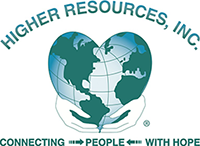Suffering from loss of one’s own employees and fellow teammates exposes human vulnerability like nothing else. Hard business negotiations involving money and other tangibles, lose significance when company employees are injured or killed. The beauty of the IPA/UPS CARE Team is the way union and company employees work side-by-side in the aftermath of a crash, bonded by the shared suffering.
Until you have a major incident, you will not really know how the company will respond. This is where training and exercising play an important role.
-Captain Susan Bisig
Following the 2010 crash of UPS Flight 6 and the 2013 crash of UPS Flight 1354, it was clear that great strides had been made in teaming up union members and company employees when the unthinkable happens. Training and exercising was put to test and the heart behind the company logo could be seen and felt as one united, cohesive team.
Death is the Great Leveller
-Claudius Claudianus (Latin Poet, c370-40)
A couple years after the response to the crash of Flight 1354, one of the company’s Care Team members died from an aneurysm. The brother-in-law of the deceased co-pilot, who she had assisted during the response, drove 5 hours to attend her funeral and 5 hours home. This story sums up the power of shared suffering in bridging relationships among complete strangers.
…leading from the heart does produce more positive results which protects the brand and helps the company, as a whole, heal faster.
-Captain Susan Bisig
Feelings of isolation and separation are classic symptoms of Post-Traumatic Stress Disorder (PTSD). Bringing people together for shared mourning and family support allows survivors to form connections and create relationships that last a lifetime as the above story illustrates. The following quote by popular researcher Brené Brown, from the University of Houston says it all as to why the IPA/UPS model works so well. Despite differences, the union and the company are aligned in their values and match it with their actions following loss of treasured employees.
"We don't have to be perfect, just engaged and committed to aligning values with actions."
-Brené Brown
Susan also serves on the Family Assistance Foundation’s Business & Industry Board. A board recently created for the purposes of the Foundation’s joint work with Louisiana State University, (LSU) in the creation of a trauma institute dedicated to improving international humanitarian assistance following workplace trauma.
































